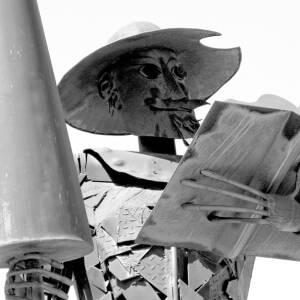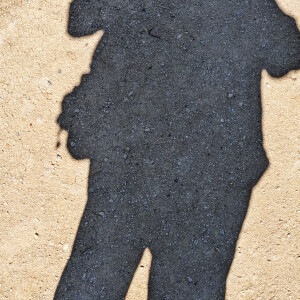San Julián, Viñón
In 711, the Moors invaded Hispania. They attacked northwards meeting two obstacles, the first of them in Asturias where they were defeated by Pelayo, the Vizigoth king, at Covadonga, in the Picos, just south of Cangas de Onís, where he had his capital city; and the second at Tours, in France, where they were defeated by Charles Martel, the grandfather of Charlemagne. They abandoned both their French ambitions and their Asturian ambitions after those defeats, contenting themselves with the rest of the Iberian peninsula. The results included almost 800 years (711 to 1492) in which almost all of the Iberian peninsula was under Muslim rule - the only exception being Asturias.
The main photo shows the interior of a small pre-romanesque church, built in the 9th century, by the Asturian Christians at Viñón, in Cabranes. The pre-romanesque and romanesque churches that were built in the 10th to 13th centuries were not the only Christian buildings in Iberia - the Moors allowed Christians and Jews to live in Iberia as long as they paid taxes - and Burgos and Zamora, among other places are important concentrations; but the north coast, behind the mountains, is where many of the Christian buildings happened.
San Julián is a small humble church and is kept locked except when a service (wedding, funeral, occasionally a mass) is held. This photo was taken with a wide-angle lens through a small window in the front door. For comparison with a much better funded pre-romanesque church of a similar age, see https://www.flickr.com/search/?text=santa+cristina+de+lena That´s Santa Cristina de Lena, a little south of Oviedo, and I think one of the most picturesque. .
And for a quick shady selfie of me, see the extra.
Late addition: thrre are some interiors from San Julián here: https://www.flickr.com/photos/don-roger/albums/72157616629312790/


Comments
Sign in or get an account to comment.


